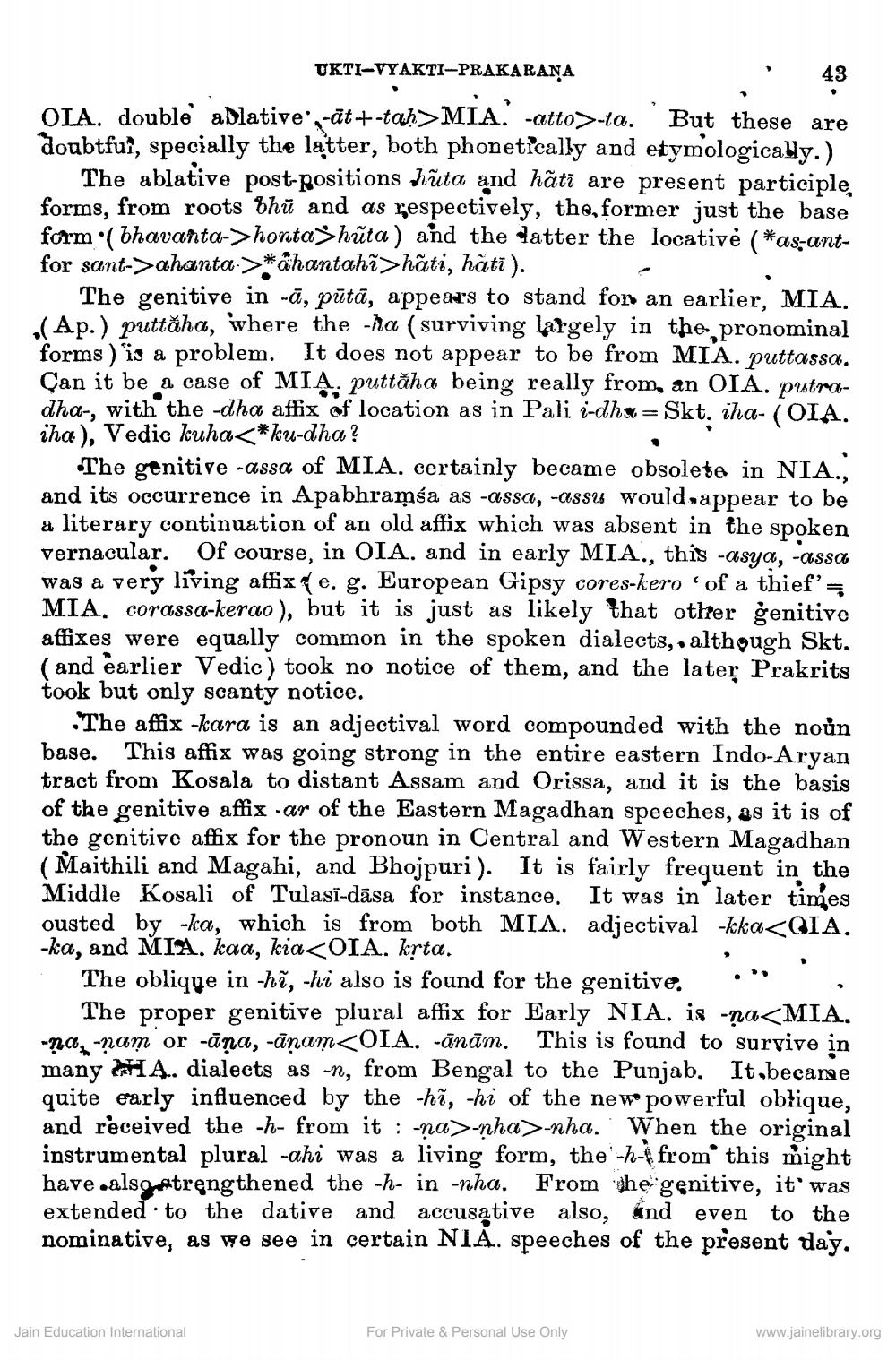________________
43
OLA. double ablative-at+-taḥ>MIA. -atto>-ta. But these are doubtful, specially the latter, both phonetically and etymologically.)
The ablative post-positions huta and hati are present participle forms, from roots bhu and as respectively, the, former just the base form (bhavanta->honta>huta) and the latter the locative (*as-antfor sant->ahanta->*âhantahî>hãti, hâti).
UKTI-VYAKTI-PRAKARANA
The genitive in -ā, pūtā, appears to stand for an earlier, MIA. (Ap.) puttǎha, where the -ha (surviving largely in the pronominal forms) is a problem. It does not appear to be from MIA. puttassa. Can it be a case of MIA, puttaha being really from, an OIA. putradha-, with the -dha affix of location as in Pali i-dha Skt. iha- (OIA. iha), Vedic kuha<*ku-dha?
The genitive -assa of MIA. certainly became obsolete in NIA., and its occurrence in Apabhramsa as -assa, -assu would appear to be a literary continuation of an old affix which was absent in the spoken vernacular. Of course, in OIA. and in early MIA., this -asya, -assa was a very living affixe. g. European Gipsy cores-kero of a thief' MIA. corassa-kerao), but it is just as likely that other genitive affixes were equally common in the spoken dialects, although Skt. (and earlier Vedic) took no notice of them, and the later Prakrits took but only scanty notice.
-
The affix -kara is an adjectival word compounded with the noun base. This affix was going strong in the entire eastern Indo-Aryan tract from Kosala to distant Assam and Orissa, and it is the basis of the genitive affix -ar of the Eastern Magadhan speeches, as it is of the genitive affix for the pronoun in Central and Western Magadhan (Maithili and Magahi, and Bhojpuri). It is fairly frequent in the Middle Kosali of Tulasi-dasa for instance. It was in later times ousted by -ka, which is from both MIA. adjectival -kka<QIA. -ka, and MIA. kaa, kia<OIA. kṛta.
Jain Education International
The oblique in -hĩ, -hi also is found for the genitive.
The proper genitive plural affix for Early NIA. is na<MIA. -na-nam or -āṇa, -āṇam<OIA. -ānām. This is found to survive in many A. dialects as -n, from Bengal to the Punjab. It became quite early influenced by the -hi, hi of the new powerful oblique, and received the -h- from it -na-nha-nha. When the original instrumental plural -ahi was a living form, the -h-from this might have also strengthened the -h- in -nha. From the genitive, it' was extended to the dative and accusative also, and even to the nominative, as we see in certain NIA. speeches of the present day.
For Private & Personal Use Only
www.jainelibrary.org




